Top speed 966 km/h Length 19 m First flight March 5, 1948 | Wingspan 18 m Engine type Westinghouse J34 | |
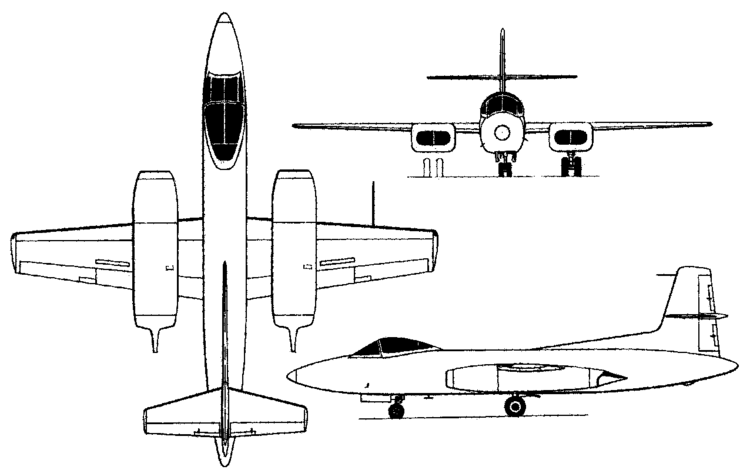 | ||
Curtiss wright xf 87 blackhawk 1948
The Curtiss-Wright XF-87 Blackhawk (previously designated the XP-87) was a prototype American all-weather jet fighter interceptor and the company's last aircraft project. Designed as a replacement for the World War II–era propeller-driven P-61 Black Widow night/interceptor aircraft, the XF-87 lost in government procurement competition to the Northrop F-89 Scorpion. The loss of the contract was fatal to the company; the Curtiss-Wright Corporation closed down its aviation division, selling its assets to North American Aviation.
Contents
- Curtiss wright xf 87 blackhawk 1948
- Design and development
- Operational history
- Variants
- Specifications XF 87
- References
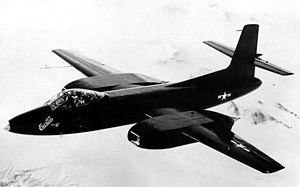
Design and development
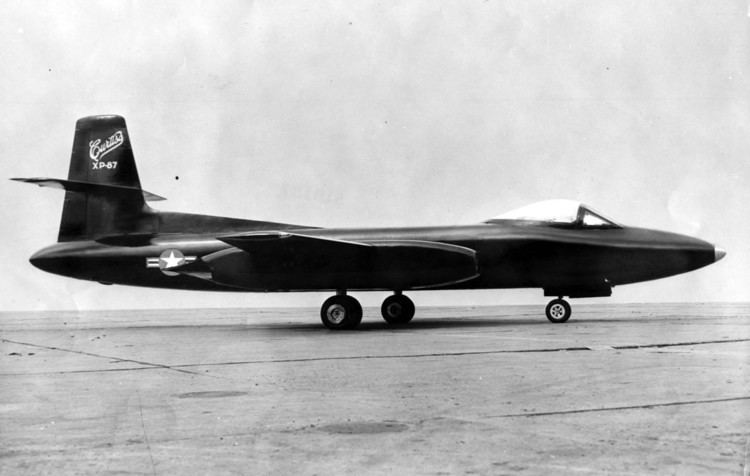
The aircraft started life as a project for an attack aircraft, designated XA-43. When the United States Army Air Forces issued a requirement for a jet-powered all-weather fighter in 1945, the design was reworked for that request.
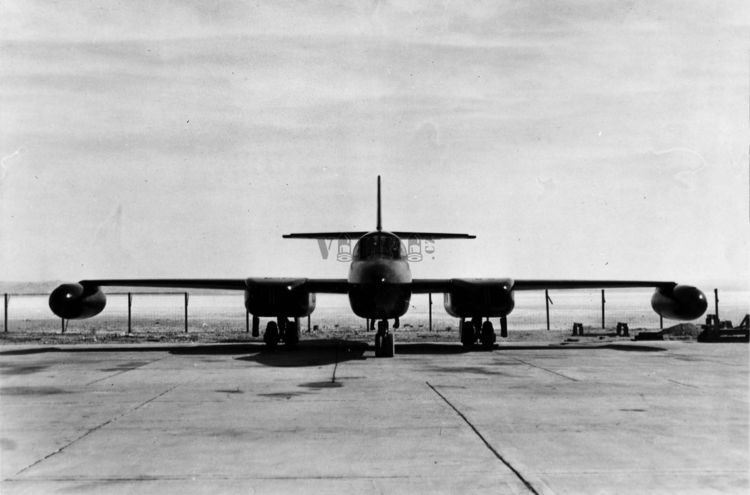
The XP-87 was a large mid-wing aircraft with four engines paired in underwing pods, with a mid-mounted tailplane and tricycle undercarriage. Two crew members (pilot and radar operator) sat side by side under a single canopy. Armament was to be a nose-mounted, powered turret containing four 20 mm (0.79 in) cannon, but this was never fitted to the prototypes.
Operational history
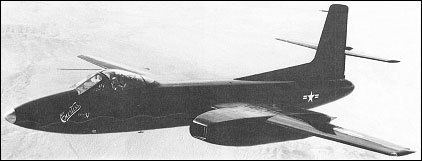
The first flight of the XF-87 Blackhawk was on 1 March 1948. Although the top speed was slower than expected, the aircraft was otherwise acceptable, and the newly formed (in September 1947) United States Air Force placed orders for 57 F-87A fighters and 30 RF-87A reconnaissance aircraft just over a month later. Since the performance problems were due to lack of power, the four Westinghouse XJ34-WE-7 turbojets of the prototypes were to be replaced by two General Electric J47 jets in production models. One of the two XF-87 prototypes was to be converted to the new powerplants for test purposes.
At this point, the USAF decided that the Northrop F-89 Scorpion was a more promising aircraft. The F-87 contract was cancelled on 10 October 1948, and both prototypes were scrapped.
Variants
Specifications (XF-87)
Data from Curtiss Aircraft 1907–1947
General characteristics
Performance
Armament
